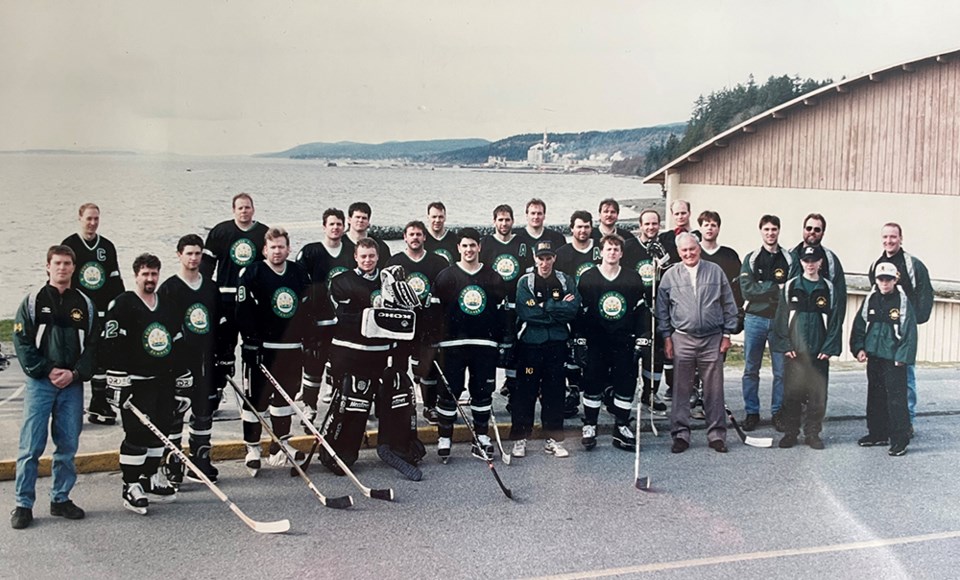The story below was published in the Peak in May of 2000, under the headline: Farewell to Arena
Augusta Recycling has been awarded the contract for the demolition of the old civic arena located at Willingdon Beach. The contract price is $184,868. The demolition is expected to begin about June 15 and should be completed within 30 days.
Once the heart of the community where social, cultural, and, most significantly, sporting events took place, the arena has been used as a large storage shed for the past few years.
Planning for the arena began in 1952. After three years of intensive effort, the 130-by-220-foot concrete-block building was officially opened on April 3, 1955. A community-wide effort made the building a reality, with countless volunteers contributing to both the fundraising and construction.
Much of the material was salvaged from the demolished Jamieson shingle mill on Powell Lake. The arena's roof is supported by 130-foot wooden trusses, each one weighing 10,000 pounds.
At one time, the skaters glided and hockey players raced on one of the largest indoor ice surfaces in the province. More than 130 men, women and students poured 1,772 bags of cement, making 220 yards of concrete to cover 17,100 square feet of floor in 20 hours. Some 30,000 pounds of granite chips were put on the wet surface and later ground and polished. Welders from the Powell River Company laid nine miles of pipe without a leak, a feat noted as exceptional by visiting experts.
The ice surface was removed from the arena in August 1975, just as the new Powell River Recreation Complex was nearing completion.
The long-span, wood-truss roof was described as unique in BC by Hotson Bakker Architects in the Powell River Waterfront Implementation Plan dated 1994. However, the arena has fallen into disrepair. The Hotson Bakker report also noted it would cost approximately $1.9 million to renovate the building to make it into a multi-purpose pavilion. Although many ideas for the treasured building have floated in the community over the years, none has ever come to fruition.
Reporter Joyce Carlson may have expressed the sentiments many people feel for this symbol of community spirit best. In 1975, as the ice was coming off the surface for the last time, she wrote in the local Powell River News:
"In the meantime, the arena floor is slowly drying. The sound of a hockey puck hitting the boards is gone. Dressing rooms are silent, devoid of the shouts of victory and the curses of defeat. Figure skaters no longer dig their blades into the seats as they prepare for their double axles and flying camels. At the end of the arena, the Zamboni is resting, High off the ice, the press box is empty, the announcer's voice silent. Supplies at the concession are dwindling. Compressors are silent, the hum of the maintenance room is stilled. In its place of prominence, the old-time clock has ceased its impartial countdown. The circuit for the siren will never close again."
Join the Peak's email list for the top headlines right in your inbox Monday to Friday.



